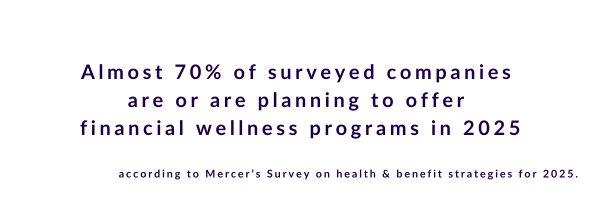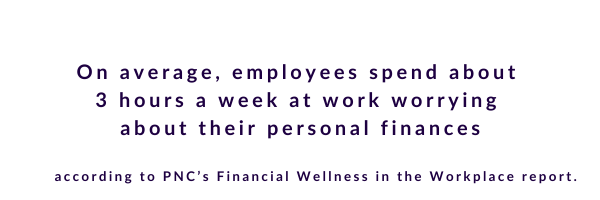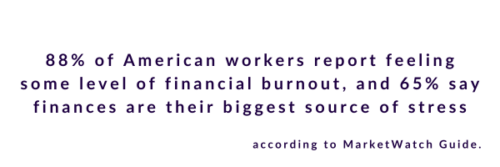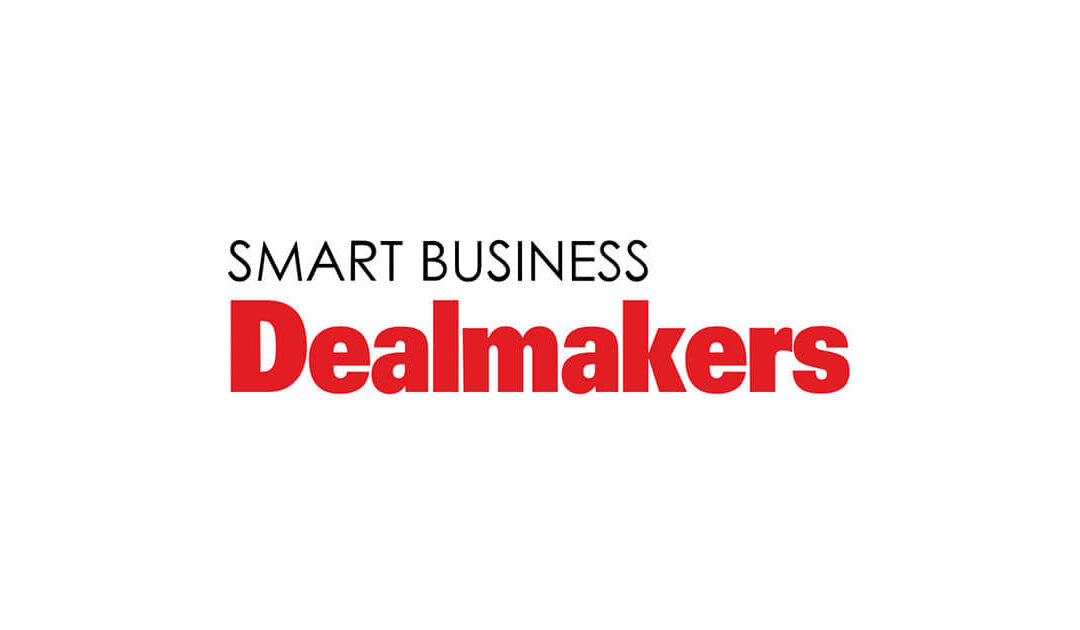
Employee Credit Card Debt: 4 Simple Ways To Help
Employee credit card debt is a significant issue among American workers. The average American’s debt balance reached $6,380 as of Q3 2024, according to TransUnion. One in five credit card users are maxed out, and 8.8% of credit card debt transitioned into delinquency during the same period. Credit card debt has increased by 48% since 2021, largely caused by post-pandemic spending and inflation.
This financial burden weighs heavily on the mental health of your workforce. Nearly half of those struggling with employee credit card debt report sleep issues, anxiety, and even depression. These struggles can spill over into the workplace, hindering your team’s productivity. According to research published in the Journal of Business and Psychology, employees dealing with financial stress are 11 times more likely to report being less effective at work.
By offering the right support, you can empower your employees to regain control over their finances, improve their overall well-being and boost your team’s wellbeing. Here are four key ways to help them manage their employee credit card debt.
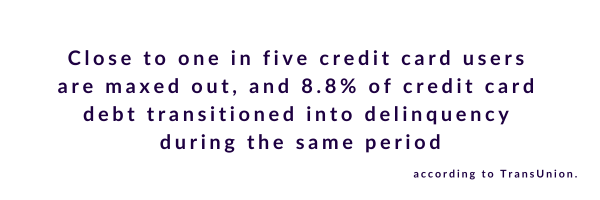
1. Educate workers on how to handle employee credit card debt
Financial literacy is essential for managing and reducing credit card debt. However, 90% of Americans are unaware of how credit cards even work, especially when it comes to negotiating terms and conditions. Filling this information gap is essential to reducing misspending. Research from InCharge Debt Solutions has shown that individuals with higher financial literacy are less likely to engage in costly behaviors, such as paying only the minimum balance or incurring late fees.
Employers can help bridge this gap by:
- Offering comprehensive financial education services such as Best Money Moves
- Hosting financial workshops on debt management
- Teaching employees how to consolidate high-interest debt into lower-interest loans—an important step, considering the average U.S. credit card APR is 24.62%
- Providing resources on how to negotiate lower rates with credit card providers.
A solid financial foundation can help your employees size up their credit card debt and then strategically approach repayment.
2. Encourage budgeting and emergency savings for those with credit card debt
Budgeting and emergency savings are critical for financial stability. Yet, according to NerdWallet, only 74% of Americans actively follow a budget. Employers can help fix this problem by fostering a culture that incentivizes financial planning.
By offering resources to help employees create a budget and stick to it, employers can help employees manage everyday expenses and prepare for emergencies. Investing in employee wellness can also boost team morale.
For employees struggling to save, automated payroll savings programs may help employees to store some of each paycheck in a dedicated account with minimal effort. Employees face less stress and greater stability when they take the time to build better financial habits. This benefits both their personal lives and workplace performance.
3. Consider employer-sponsored employee credit card debt assistance programs
Employer-sponsored debt assistance programs allow you to directly address employee credit card debt. These programs vary, but many offer direct contributions or match payments toward employee credit card debt. This helps to reduce their balances more quickly. Debt assistance programs are highly sought after. When surveyed by the Financial Health Network 62% of respondents reported that they would be more likely to stay at a job that offered useful debt-related benefits.
4. Offer flexible payroll options
Many employees struggle to make ends meet on a traditional biweekly pay schedule, particularly the 78% who live paycheck-to-paycheck. Flexible payroll options like earned wage access programs can offer relief for these employees by allowing them to access their earnings before payday in case of an emergency. This approach can help employees pay their bills on time, avoid late fees and reduce their reliance on credit cards for everyday expenses.
Not only can flexible pay options help your employees in a financial bind, but they also help employees feel more in control of their finances, reducing stress.
Supporting employees in managing credit card debt isn’t just a kind thing to do for your employees — it’s a smart move for your business. When employees have the tools to take back control of their finances, they’re less stressed, more focused and better equipped to do their job.
Help your employees with their credit card debt with Best Money Moves!
Best Money Moves is an AI-driven, mobile-first financial wellness solution designed to help employees with varying levels of financial knowledge dial down their most top-of-mind financial stresses. As an easy-to-use financial well-being solution, Best Money Moves offers comprehensive support toward any money-related goal, ranging from debt management to purchasing a home. With 1:1 money coaching, budgeting tools and other resources, our AI-driven platform is designed to help bolster employee financial wellbeing.
To learn more about Best Money Moves Financial Wellness Platform, let’s schedule a call. Contact us and we’ll reach out to you soon.


